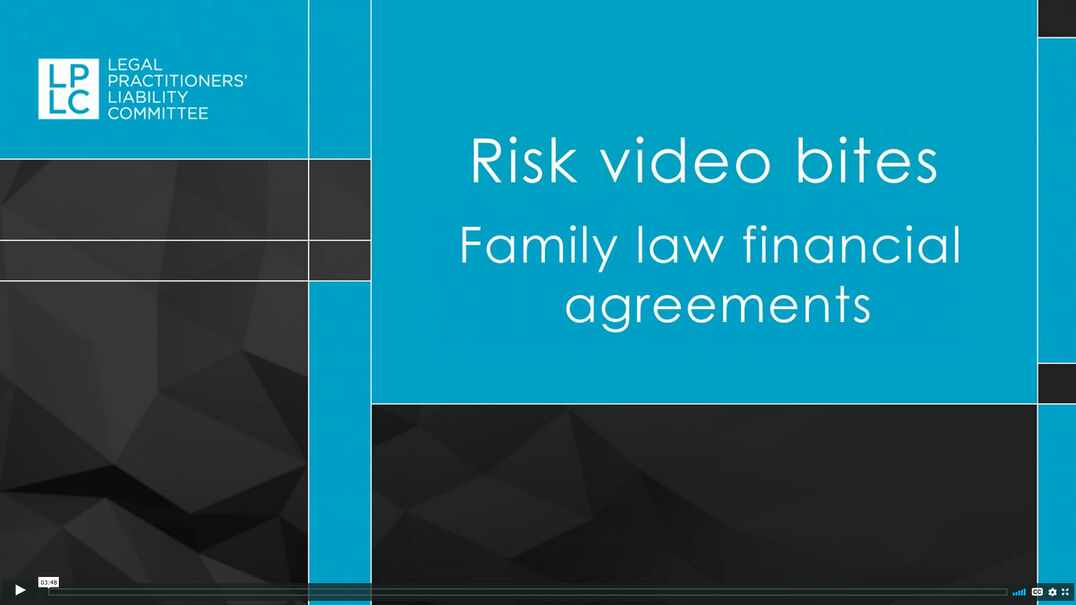Time limits most commonly missed in relation to de facto limitations, a claim example and lessons learned.
What's on this page?
De facto limitations
| Action | Time limit | Legislation | Extension availability |
|---|---|---|---|
|
Action
De facto partner property claim |
Time limit
2 years after the end of the relationship |
Legislation
s.44(5) Family Law Act 1975 (Cwlth) |
Extension availability
The court may grant leave to a person to apply after the 2 year limit has passed if it is satisfied that hardship would be caused to that person or a child if leave were not granted – s.44(6)(a) Family Law Act 1975 (Cwlth). |
Claim example
A practitioner represented a client making a property claim against his long-term de facto partner from whom he had separated two months earlier.
The practitioner lodged caveats over two properties owned by the client’s ex-partner within two months of initial instructions. The practitioner then wrote to the client seeking instructions to send a letter of demand and commence negotiations.
He received no response for almost 18 months. The client then contacted the practitioner wanting to know what was happening. The practitioner responded confirming the caveats had been lodged and that the practitioner was waiting on instructions about sending the proposed letter to the ex-partner. A few days later instructions were received to send the letter. The ex-partner did not respond to the letter.
Over the next two months the practitioner had meetings with the client where they disagreed over the practitioner’s payment arrangements. By the time the practitioner was instructed to issue proceedings, the two year limitation period then under section 43(1) of the Relationships Act 2008 (Vic) (section 44(5) of the Family Law Act 1975 (Cwlth) now applies: see section 90RC) had expired and the client lost the opportunity to issue proceedings. The client subsequently terminated the retainer and brought proceedings against the practitioner claiming damages.
At no point did the practitioner advise the client of the limitation period. The practitioner said that in the 18-month period in which the matter was dormant the practitioner was distracted by his spouse’s serious illness and did not turn his mind to the limitation issue. Even after contact with the client resumed, the practitioner was preoccupied with the cost issues and failed to consider the limitation period.
Lessons
- Identify and diarise applicable limitation dates at the start of each matter and advise the client of the dates and importance of acting before then.
- Be careful not to let matters drag on. If the client will not respond to requests for instructions, terminate the retainer.
- Have processes to ensure files are not overlooked when there are personal issues that may cause practitioners to be distracted.


